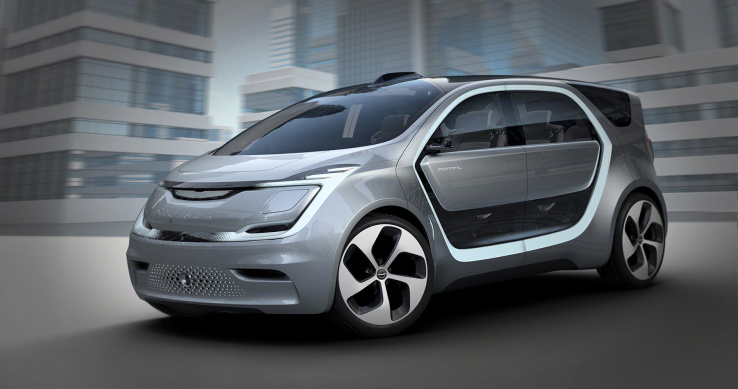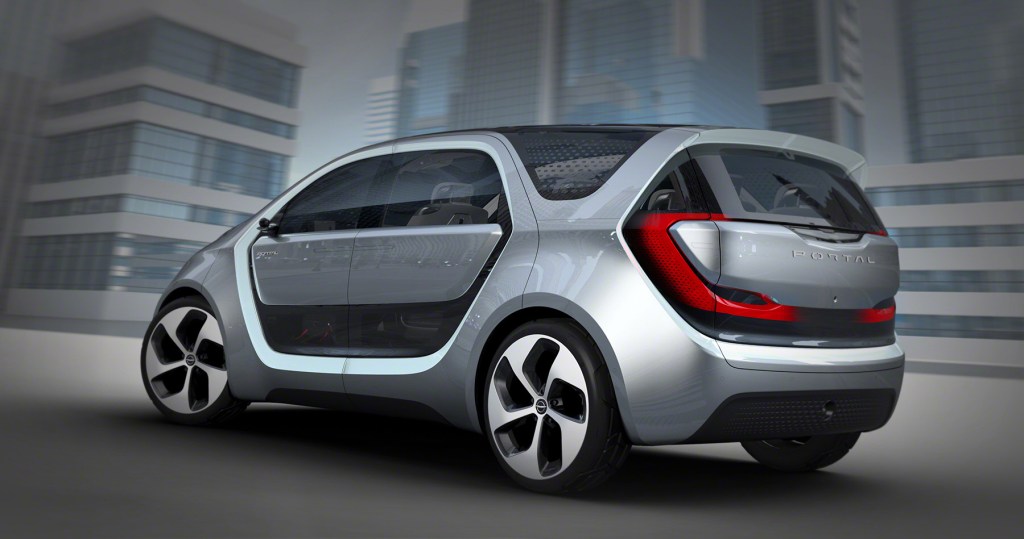

Fiat Chrysler is getting ready for a future in which your vehicle is an extension of your living space with their new Portal concept car, which is debuting at CES this year. The Portal is an electric-powered vehicle with its own wireless network, Level 3 semi-autonomy standard and the hardware necessary for an upgrade to true Level 4 self-driving capability, and fold-flat/removable seating for flexible interior reconfiguration options.
The van seats six, and is designed to cater to the “millennial lifestyle,” whatever that might mean. Reading between the lines it sounds like it means inexpensive to buy and operate, with enough space inside to move from being a mobile office to being a mobile family playroom as the millennial generation ages into parenthood.

FCA also clearly thinks that this millennial audience values ethical and environmentally-friendly materials, since it uses no animal hides in its synthetic leather interior, and also claims over 250 miles of range form its electric powerhouse. Quick charger support for DC Fast Charge tech also means it should be able to recoup 150 miles of range in under 20 minutes of being plugged in.
Another key ingredient here is the lighting system, which it says is not “a mere accent” in the case of the Portal. The big sliding doors have illuminated surrounds to show you where to get in and out, and the front lights, side panels and rear all feature LED lights than can change to reflect a full spectrum of hues. These can also animate, and be customized to display different signals based on a user’s preference. Communicative light arrays are increasingly common on future-focused concepts like this one, since they’ll be a key ingredient in communicating a car’s intended path and behavior in a self-driving future where pedestrians regularly encounter these vehicles.

The car is also fitted throughout with docking stations for tablets and smartphones, and it’s designed kind of like an upgradeable DIY entertainment system extension. These are peppered throughout the interior, and should extend the life of the vehicle’s onboard entertainment and information display systems since users presumably will update their mobile devices much more frequently than they update their vehicles.
Portal also contains facial recognition and voice printing to help it set in-car features like lighting, music, navigation and more to specific drivers and riders; vehicle-to-X (other cars and city infrastructure) communication for advanced contextual safety features, and local community sharing of things like photos, music and video over the internal network.

The van anticipates a time when we use our vehicles more like modular cars on a train than like we do now, where you can bring your own gadgets and use things like the fold-flat seating to change the space quickly and easily depending on your use for the day. It’s a clever look, and a likely candidate for use in shared fleet vehicles systems, which are probably also going to gradually replace individual ownership as the millennial generation ages up.
FCA worked with key suppliers in developing the concept, including Adient for the modular seating, as well awn Panasonic and Samsung for in-car connectivity and display. Tech partners are likely to become more important as Tier 1 partners for automakers like Fiat Chrysler as we chug along the path to full autonomy, and the Portal is a good example of what those closer relationships will lead to in vehicle design.

